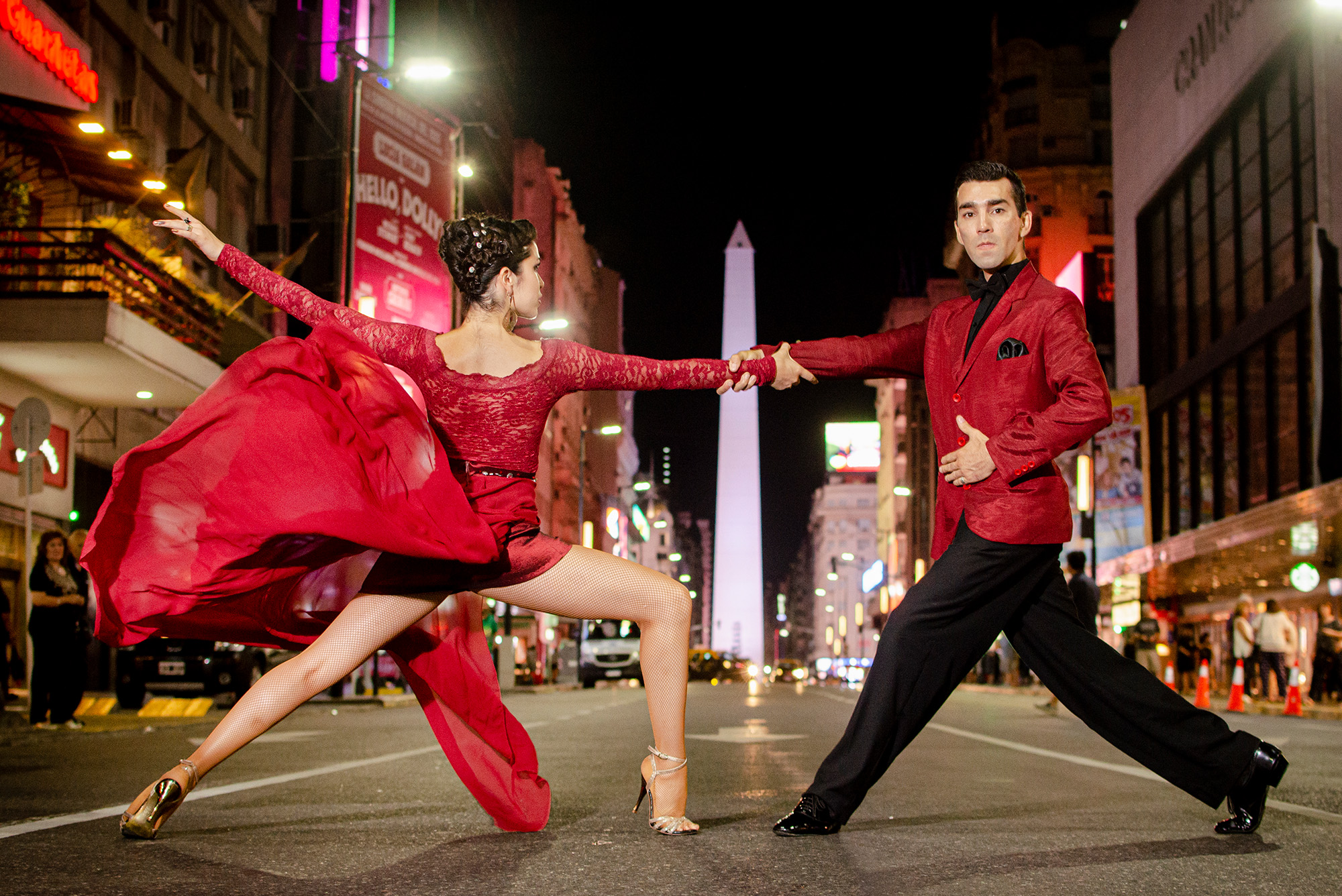A Tango Lover’s Guide to Buenos Aires offers an immersive journey through the heart of Argentina’s most passionate dance. From the historic milongas of San Telmo to the grand performances in theaters, this guide takes you to the best places to experience tango in all its forms.
- History of Tango in Buenos Aires
- Tango-Inspired Neighborhoods
- Famous Tango Shows
- Top Milongas to Visit
- Learning the Dance: Tango Classes and Schools
- Tango Fashion and Shopping
- Tango Etiquette and Local Tips
History of Tango in Buenos Aires
The history of tango in Buenos Aires is a tale of cultural fusion, evolution, and passion. Tango was born in the late 19th century in the working-class neighborhoods of Buenos Aires, where European immigrants, African descendants, and native Argentinians mingled. The dance and its accompanying music were influenced by a mix of European, African, and indigenous rhythms, creating a unique cultural expression.
Initially, tango was associated with the lower classes and was often performed in bars, brothels, and streets. It was seen as provocative and even scandalous, with its close embraces and sultry movements. Despite its initial stigma, tango gained popularity in Buenos Aires and soon spread to the fashionable salons of Europe, particularly in Paris, where it became a sensation in the early 20th century.
As tango’s popularity grew internationally, it began to gain acceptance among Argentina’s upper classes, and it evolved into a more polished and refined art form. The golden age of tango occurred in the 1930s and 1940s, when orchestras led by musicians like Carlos Gardel, Aníbal Troilo, and Astor Piazzolla brought tango music to new heights, making it a defining feature of Argentine identity.
Today, tango is deeply intertwined with Buenos Aires’ cultural fabric, celebrated both as a social dance in milongas (tango dance halls) and as a professional performance art. It has been recognized by UNESCO as part of the world’s Intangible Cultural Heritage, preserving its legacy as one of the most passionate and iconic symbols of Argentina.
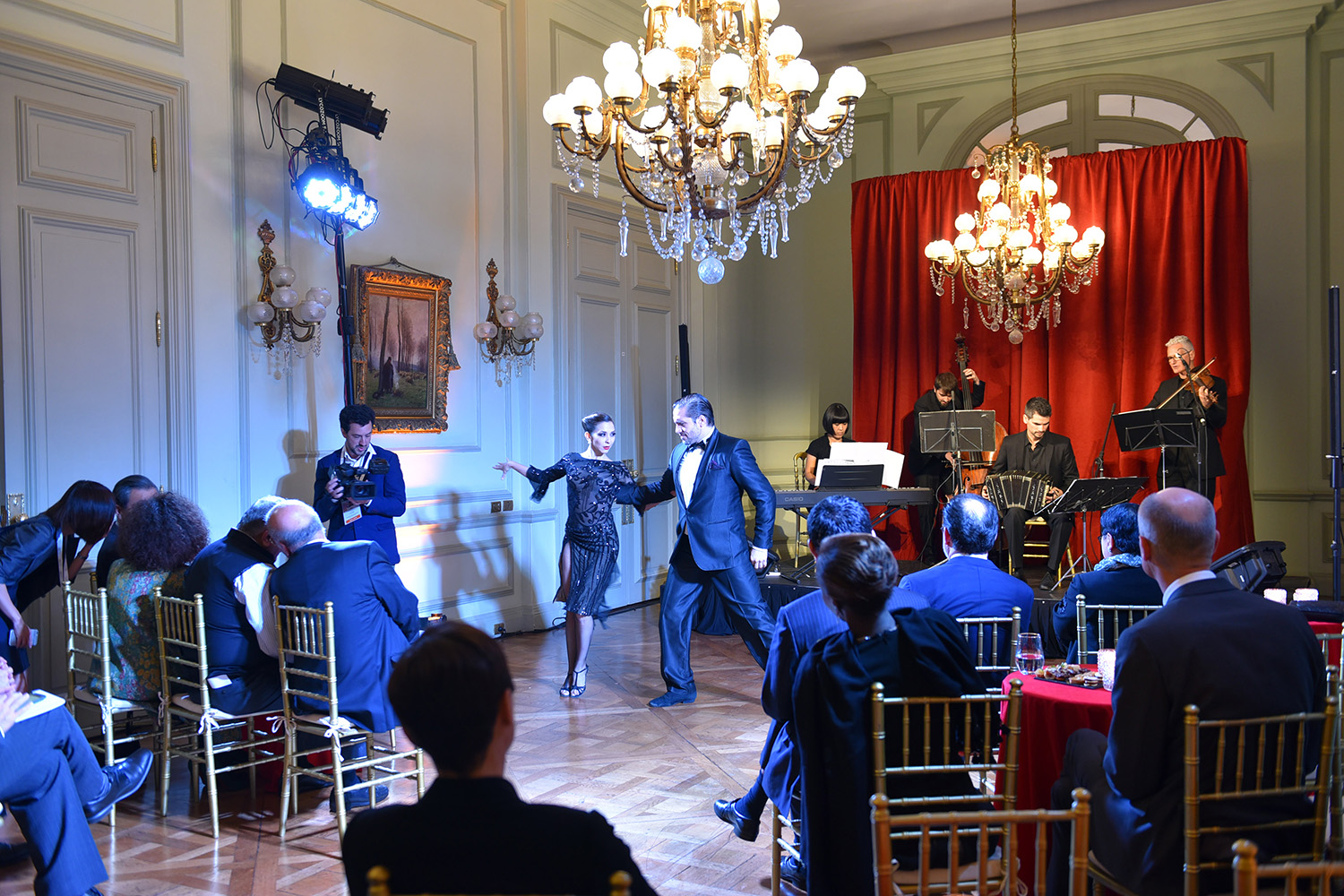
Tango dancers gracefully embrace the rhythm and soul of Buenos Aires. Photo by Cancillería Argentina, under the CC BY 2.0 <https://creativecommons.org/licenses/by/2.0> license, via Wikimedia Commons.
Tango-Inspired Neighborhoods
Buenos Aires is home to several tango-inspired neighborhoods, each offering a unique glimpse into the history and culture of this iconic dance. These neighborhoods reflect the deep connection between Buenos Aires and tango, each offering a different facet of the dance’s cultural significance.
1. San Telmo
As the birthplace of tango, San Telmo is one of the most vibrant tango neighborhoods in Buenos Aires. With cobblestone streets, historic buildings, and a bohemian atmosphere, it is famous for its tango bars, street performances, and the Sunday San Telmo Market, where tango dancers perform for tourists.
Plaza Dorrego serves as the heart of San Telmo, where vibrant street performances often showcase live tango music and dancers, especially during the Sunday San Telmo Market. This famous market is a mix of antiques, artisanal goods, and live tango shows, drawing both locals and tourists eager to experience the neighborhood’s traditional flair. Additionally, San Telmo boasts several historic tango venues like Bar Sur and El Viejo Almacén, where visitors can either watch or participate in the dance. Overall, San Telmo is a must-visit for those looking to immerse themselves in Buenos Aires’ tango scene, offering a nostalgic journey through the city’s cultural past.
2. La Boca
Renowned for its vibrant houses and artistic spirit, La Boca stands out as a premier tango destination. The neighborhood is home to Caminito, a famous street where tango music and dance come alive daily. The strong influence of Italian immigrants has significantly shaped the evolution of tango, allowing visitors to immerse themselves in the rich cultural roots that gave birth to this iconic dance.
A highlight of La Boca is the legendary La Bombonera stadium, the proud home of the Boca Juniors football team, which further fuels the neighborhood’s passionate energy. Beyond its artistic allure, La Boca is alive with numerous tango performances and striking street art, making it a lively hub for both dance aficionados and art enthusiasts. Visitors can wander through various galleries and markets, engaging with the local artistry that beautifully reflects the neighborhood’s history and identity.
3. Palermo
Palermo offers a more contemporary tango experience. Neighborhoods like Palermo Soho and Palermo Hollywood are filled with modern tango bars and milongas that blend traditional and experimental tango styles, attracting a younger crowd. La Viruta, one of the most popular milongas, is located here.
Celebrated for its artistic flair, lush parks, and vibrant nightlife, Palermo is one of Buenos Aires’ most dynamic and trendy neighborhoods. Divided into various sub-neighborhoods, it attracts a diverse crowd, from locals to international visitors. The area is known for its beautiful green spaces, including the expansive Bosques de Palermo, which features lakes, rose gardens, and walking trails—perfect for leisurely strolls or picnics. Palermo also boasts a rich cultural scene, with numerous galleries, boutiques, and artisanal shops, alongside a wide array of cafes and restaurants offering diverse culinary experiences.
4. Almagro
This neighborhood is another key area for tango culture, home to traditional milongas such as Club Gricel and Salón Canning. Almagro provides a more intimate and authentic experience of tango compared to the more tourist-oriented areas.
The area is also dotted with traditional cafés, bars, and restaurants, offering a taste of Argentine cuisine in a laid-back setting. Culturally, Almagro is recognized for its artistic influence, featuring street art and murals that reflect the local creativity.
5. Abasto
Known for its connections to Carlos Gardel, the legendary tango singer, Abasto is steeped in tango history. Gardel’s house is now a museum, and the area is home to various milongas and tango-inspired attractions.
In addition to its tango scene, Abasto boasts a variety of restaurants, cafés, and theaters, contributing to its lively atmosphere. It’s a great place to explore local Argentine cuisine, enjoy a traditional tango show, or simply stroll through the streets and take in the colorful architecture.
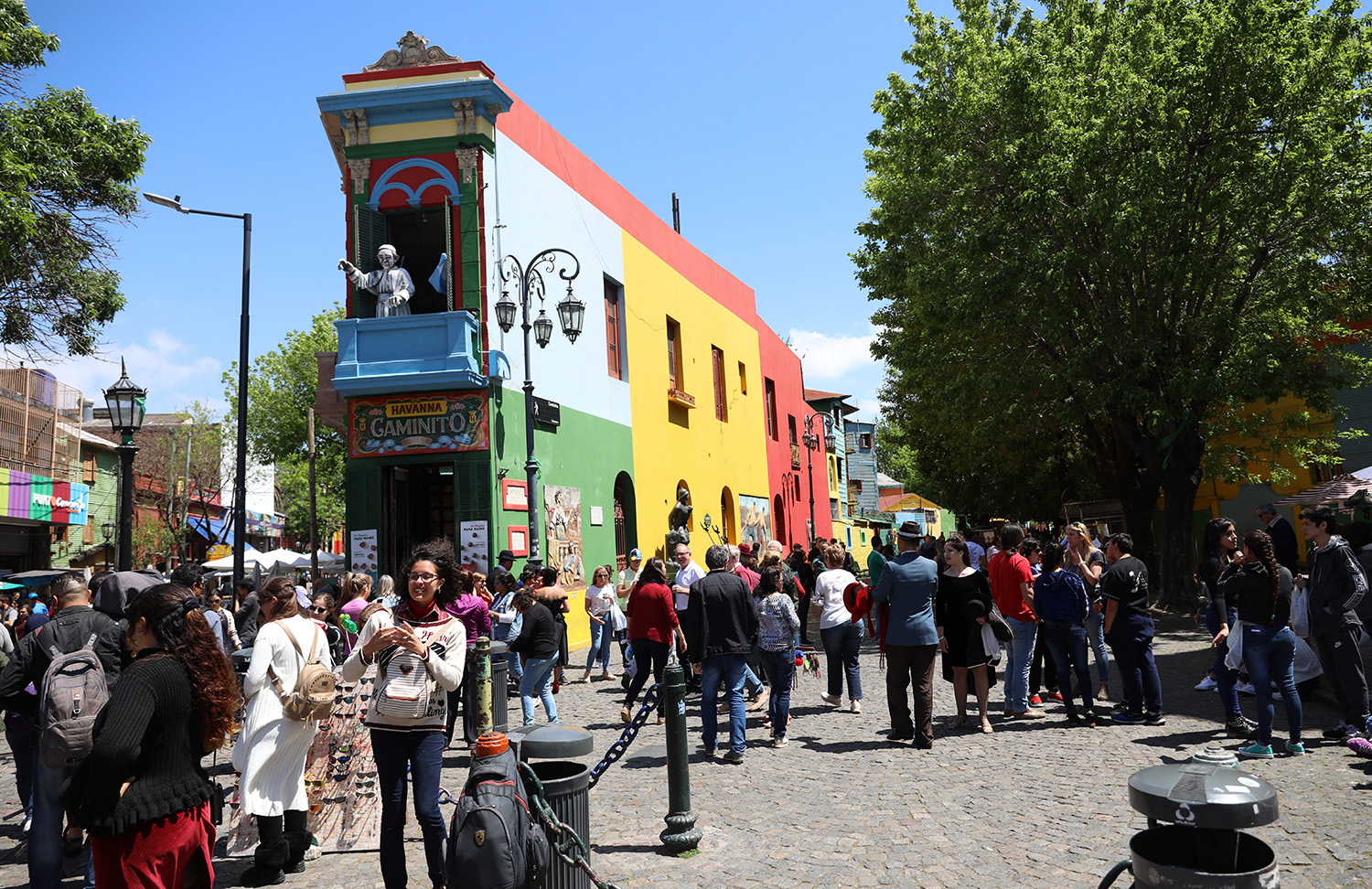
Strolling through the vibrant hues of Caminito, where art, culture, and tango come alive in every corner. Photo by DerHexer, Wikimedia Commons, under the CC-by-sa 4.0, CC BY-SA 4.0 <https://creativecommons.org/licenses/by-sa/4.0> license, via Wikimedia Commons.
Famous Tango Shows
Buenos Aires is home to several renowned tango shows that combine dance, music, and a deep appreciation for Argentina’s cultural heritage. These shows provide a blend of traditional and modern tango, offering a captivating glimpse into Argentina’s beloved dance form. Here are some of the most famous tango shows:
1. El Viejo Almacén:
El Viejo Almacén is a historic tango venue located in the San Telmo neighborhood of Buenos Aires, Argentina. Known for its traditional tango performances, it offers an intimate and authentic experience of the city’s tango culture. Founded in 1969, El Viejo Almacén has become an iconic spot where visitors can enjoy live tango shows while dining in a classic Buenos Aires atmosphere, complete with rich history and charm.
Address: Balcarce 799 & Independencia, San Telmo. Buenos Aires, Argentina
Reservations: Make your reservation online.
2. Café de los Angelitos
Café de los Angelitos is a historic tango venue and café in Buenos Aires, famed for its dazzling tango shows and elegant dining experience. With a rich history dating back to the early 1900s, this iconic spot combines gourmet Argentine cuisine with live tango performances, offering visitors a journey through the golden age of tango. The venue’s charming interior and ambiance make it a prime destination for both locals and tourists seeking an authentic taste of Buenos Aires’ tango culture.
Address: Avenida Rivadavia 2100 (esq, Rincón, 1033 Buenos Aires, Argentina
Reservations: For reservations, you can contact +54 11-4952-2320.
3. Rojo Tango
Rojo Tango is an intimate, luxurious tango show located at the Faena Hotel in Buenos Aires. It offers an exclusive and high-end experience, combining live tango performances with gourmet dining. Known for its seductive ambiance and world-class performers, Rojo Tango provides a dramatic showcase of tango’s history with vibrant costumes, live music, and mesmerizing choreography. The venue’s upscale setting adds to the allure, making it one of the most prestigious tango shows in the city.
Address: Martha Salotti 445, C1107 Cdad. Autónoma de Buenos Aires, Argentina
Reservations: Make your reservation online.
4. El Querandí
El Querandí is one of Buenos Aires’ most iconic tango venues, located in the historic San Telmo neighborhood. The venue is set in a beautifully restored 1920s-era building. With its cozy atmosphere and traditional décor, El Querandí transports guests to the golden age of tango. The show traces the history of tango through different eras, with live performances featuring skilled dancers, singers, and a live orchestra. It’s accompanied by a gourmet Argentine dinner, allowing visitors to indulge in local cuisine while enjoying the performance.
Address: Perú 322, C1067AAH Cdad. Autónoma de Buenos Aires, Argentina
Reservations: Make your reservation online.
5. Señor Tango
Señor Tango is a popular tango show in Buenos Aires, known for its extravagant performances and vibrant atmosphere. The venue showcases skilled dancers and musicians, creating a captivating experience that celebrates the essence of tango. Guests can enjoy a traditional Argentine dinner while watching the show, making it a perfect way to immerse themselves in the tango culture.
Address: Vieytes 1655, C1276 Cdad. Autónoma de Buenos Aires, Argentina
Reservations: You can make reservations at reservas@srtango.com or +54-11-43030233-34.
6. Tango Porteño
Tango Porteño is a prominent tango venue in Buenos Aires, located near the famous Obelisk. The venue captures the spirit of 1940s Buenos Aires, offering an immersive experience with a combination of tango performances, live music, and an optional dinner. Known for its grandeur and elegance, Tango Porteño showcases professional dancers and musicians, making it a great place for tourists and locals to enjoy the cultural richness of Argentine tango.
Address: Cerrito 570, C1010 Cdad. Autónoma de Buenos Aires, Argentina
Reservations: Make your reservation online.
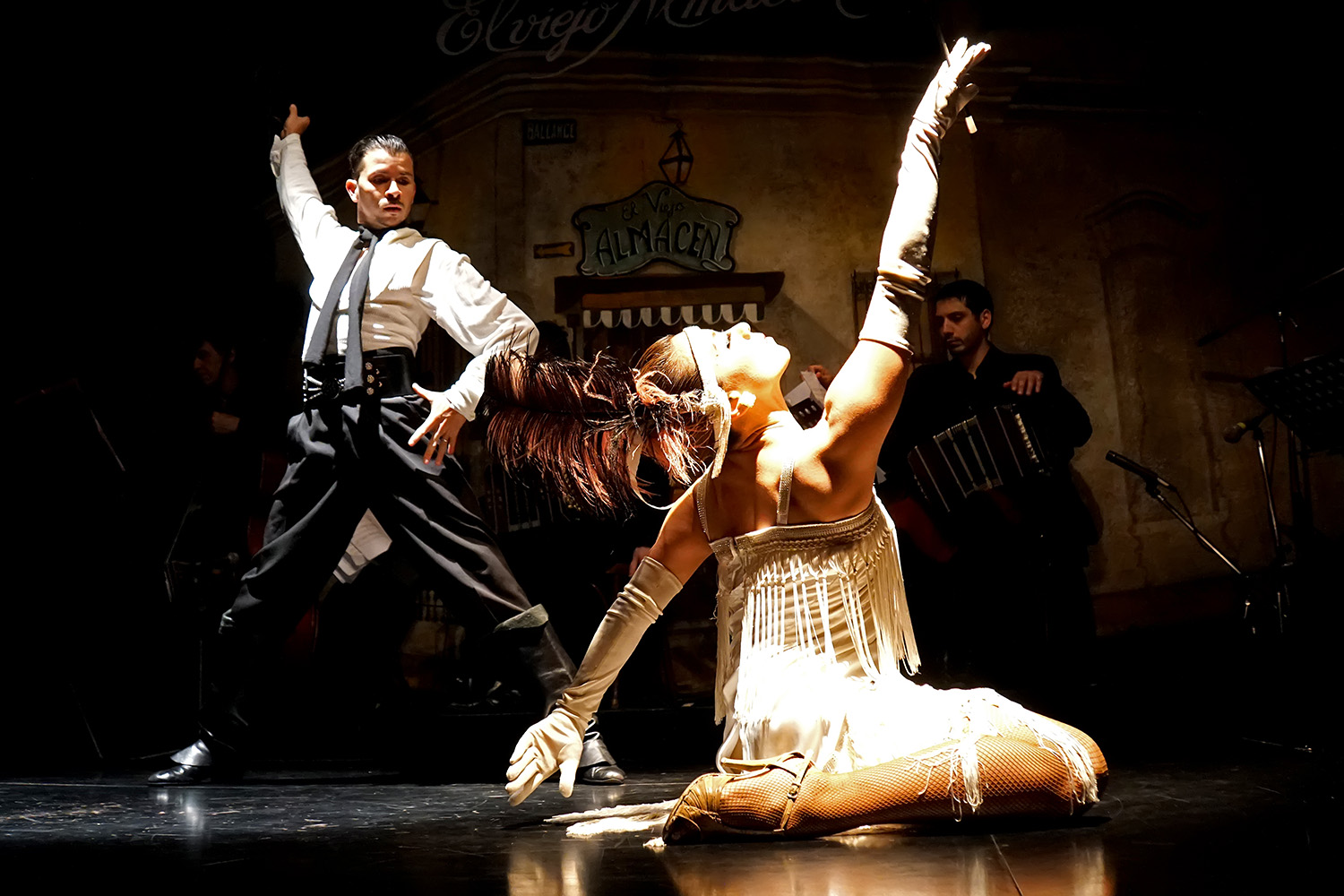
Lost in the rhythm of the night, where every step tells a story and passion ignites the dance floor. Photo by Dennis G. Jarvis, under theCC BY-SA 2.0 <https://creativecommons.org/licenses/by-sa/2.0> license, via Wikimedia Commons.
Top Milongas to Visit
A milonga is a social event or gathering where people dance the Argentine tango. It typically takes place in a dance hall or club and follows a structured format where dancers come together to enjoy traditional tango music and dance. Milongas are often characterized by a few specific elements:
Music: Tango music is played in sets called tandas (usually 3–4 songs), with breaks in between called cortinas, during which dancers switch partners.
Customs: One common practice is the cabeceo, a traditional way to ask someone to dance by making eye contact and nodding rather than verbally requesting.
Social atmosphere: Unlike performances, a milonga is a more social and interactive space where dancers of all levels come to dance, practice, and enjoy the communal experience.
Without further ado, here are some of the top milongas to visit in Buenos Aires:
1. La Viruta
La Viruta, located in Palermo, is one of Buenos Aires’ most iconic milongas, attracting both locals and tourists for an authentic tango experience. The venue boasts a casual atmosphere, welcoming dancers of all levels. Throughout the evening, they offer lessons followed by a lively milonga filled with traditional and modern tango music. Additionally, La Viruta hosts special events and performances, featuring various dance styles like salsa and rock, making it a quintessential destination for tango enthusiasts.
Address: Armenia 1366 1er subsuelo, C1414DKD Cdad. Autónoma de Buenos Aires, Argentina
Website: https://lavirutatangoclub.com/
2. El Beso
El Beso Milonga in Buenos Aires is a renowned tango venue known for its intimate and traditional atmosphere. It caters to experienced dancers, emphasizing elegance and precision on the dance floor. With various tango nights throughout the week, it offers different music styles and instruction levels, making it a top choice for those seeking an authentic tango experience.
Address: Riobamba 416, C1025 Cdad. Autónoma de Buenos Aires, Argentina
Website: https://www.elbeso.com.ar/
3. Confitería Ideal
Confitería Ideal is a historic milonga in Buenos Aires, offering a nostalgic tango experience in a stunning early 20th-century setting. With its elegant marble columns and chandeliers, the venue captures the charm of tango’s golden age. Popular for its milonga nights, it attracts both tourists and enthusiasts eager to dance in the grand ballroom or enjoy performances from the balconies. Confitería Ideal also hosts live tango music, making it a cultural gem for anyone looking to immerse themselves in Buenos Aires’ tango scene.
Address: Suipacha 384, C1008AAF Cdad. Autónoma de Buenos Aires, Argentina
Website: https://laideal.ar/
4. Milonga Parakultural
Milonga Parakultural is a celebrated milonga held at Salon Canning, one of Buenos Aires’ classic tango venues. Since the 1990s, it has been a vital part of the city’s tango culture, attracting a diverse crowd of local and international dancers, from beginners to seasoned tangueros. Hosted several nights a week, the milonga features live orchestras and performances by top dancers, creating a lively atmosphere. Known for its welcoming vibe, Milonga Parakultural blends traditional tango with a contemporary scene, making it one of the city’s most popular tango events.
Address: Maipú 365, C1006 Cdad. Autónoma de Buenos Aires, Argentina
Website: https://www.parakultural.com.ar/
5. La Bicicleta
La Bicicleta is a friendly and relaxed milonga in Buenos Aires, known for its welcoming atmosphere that appeals to both beginners and experienced dancers. Hosted at various locations, it often features live music and emphasizes a sense of community among attendees. The milonga encourages social interaction, making it a favorite spot for those wanting to enjoy tango in a fun, unpretentious setting.
Address: Av. Belgrano 2608, C1096AAQ Cdad. Autónoma de Buenos Aires, Argentina
Website: https://www.facebook.com/labicicletatangoclub
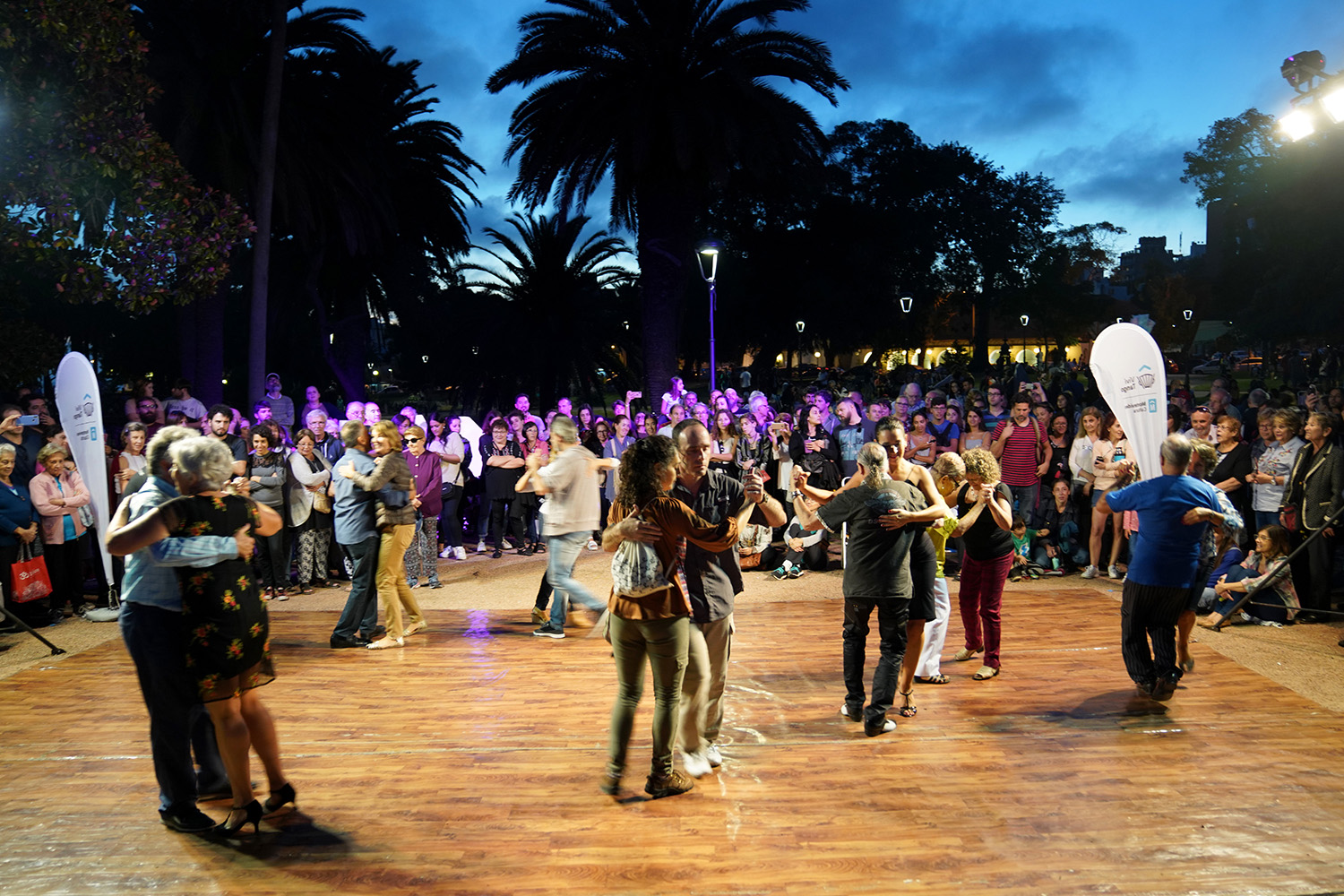
Dancers immerse themselves in the rhythm of Argentine tango at a vibrant milonga, where tradition and passion come alive on the dance floor. Photo by Cancillería Argentina, under the CC BY 2.0 <https://creativecommons.org/licenses/by/2.0> license, via Wikimedia Commons.
Learning the Dance: Tango Classes and Schools
If you’re interested in learning tango, Buenos Aires offers a variety of tango schools and classes catering to all skill levels. There are plenty of opportunities to immerse yourself in this passionate art form. Many schools focus on both the classic Argentine style and contemporary techniques, offering private lessons, group sessions, and workshops. Whether you’re a beginner or a seasoned dancer, Buenos Aires is a perfect destination to master the elegance and intensity of tango. Without further ado, here are some of the top tango schools and classes in Buenos Aires:
1. Escuela Mundial de Tango
Escuela Mundial de Tango is a prestigious tango school in Buenos Aires, known for its world-class instructors and personalized tango lessons. It offers courses for dancers of all levels, from beginners to advanced, providing both group and private lessons. The school places a strong emphasis on traditional Argentine tango while also incorporating modern techniques. It’s a great place to refine your tango skills or immerse yourself in the vibrant tango culture of Buenos Aires.
Address: Florida 656 1er piso, C1005 Cdad. Autónoma de Buenos Aires, Argentina
Classes: Online and in person. Regular classes from 11 a.m. to 10 p.m. from Monday to Friday. Special classes every Saturday.
Website: https://escuelamundialdetango.com/tango-lessons/
2. La Viruta Tango Club
At La Viruta, tango dance lessons are offered for all levels, from beginners to advanced dancers, with instructors providing step-by-step guidance. These classes cover traditional Argentine tango techniques, posture, and musicality, helping dancers build their skills in a relaxed and friendly environment. Whether you’re new to tango or looking to refine your moves, La Viruta is a great place to learn and practice.
Address: Armenia 1366 1er subsuelo, C1414DKD Cdad. Autónoma de Buenos Aires, Argentina
Classes: Wednesdays at 10 p.m., Fridays at 9:45 p.m., and Sundays at 10 p.m.
Website: https://lavirutatangoclub.com/
3. El Beso
At El Beso, tango lessons are offered to dancers of various levels, with a focus on traditional Argentine tango techniques. Lessons take place before the milonga begins, providing dancers with an opportunity to improve their skills in a more formal, intimate setting. The atmosphere is ideal for both beginners learning the basics and advanced dancers refining their craft. After the lessons, attendees can join the milonga to practice their moves in a real social tango environment.
Address: Riobamba 416, C1025 Cdad. Autónoma de Buenos Aires, Argentina
Classes:
- Mondays: 1:30-3:00 pm, Quique Camargo’s class followed by Tango Camargo milonga; 8:30-10:00 pm, Tango Academy class followed by Monday Practice.
- Tuesdays: 2:00-3:00 pm, Lan Yijia Wang’s class followed by Morocha Martinez milonga; 7:30-9:00 pm, Edith Paez’s class (Salon of Lights).
- Wednesdays: 8:00-10:00 pm, María Plazaola’s class at the Tango Academy.
- Thursdays: 1:30-3:00 pm and 8:00-9:30 pm, Quique Camargo’s classes.
- Fridays: 1:00-2:30 pm, Diego and Zoraida’s class; 8:00-10:00 pm, Female Technique (Salon of Lights).
- Saturdays: 1:30-3:00 pm, Quique Camargo’s class; 8:00-9:30 pm, Martin Serrano & Martin Bordon’s class.
- Sundays: 2:00 PM to 3:00 PM, join La Rosa Milonga classes with Carolina Couto, followed by a lively milonga.
Website: https://www.elbeso.com.ar/
4. Club Gricel Tango Argentina
Club Gricel is a renowned tango venue in Buenos Aires, celebrated for its vibrant dance classes and milongas. Club Gricel offers tango classes for all levels, from beginners to advanced dancers. The focus is on technique, musicality, and partner work. The club provides a warm and welcoming environment, making it an ideal place for both locals and tourists to immerse themselves in the tango culture. In addition to classes, Club Gricel hosts regular milongas where students can practice their dancing in a social setting, often featuring live music.
Address: La Rioja 1180 – Buenos Aires city
Classes: Tango and Milonga classes are held on Sundays from 6:30 to 8:00 p.m., Thursdays from 7:30 to 9:00 p.m., and Saturdays from 8:00 to 9:30 p.m.
Website: https://clubgricel.com.ar/
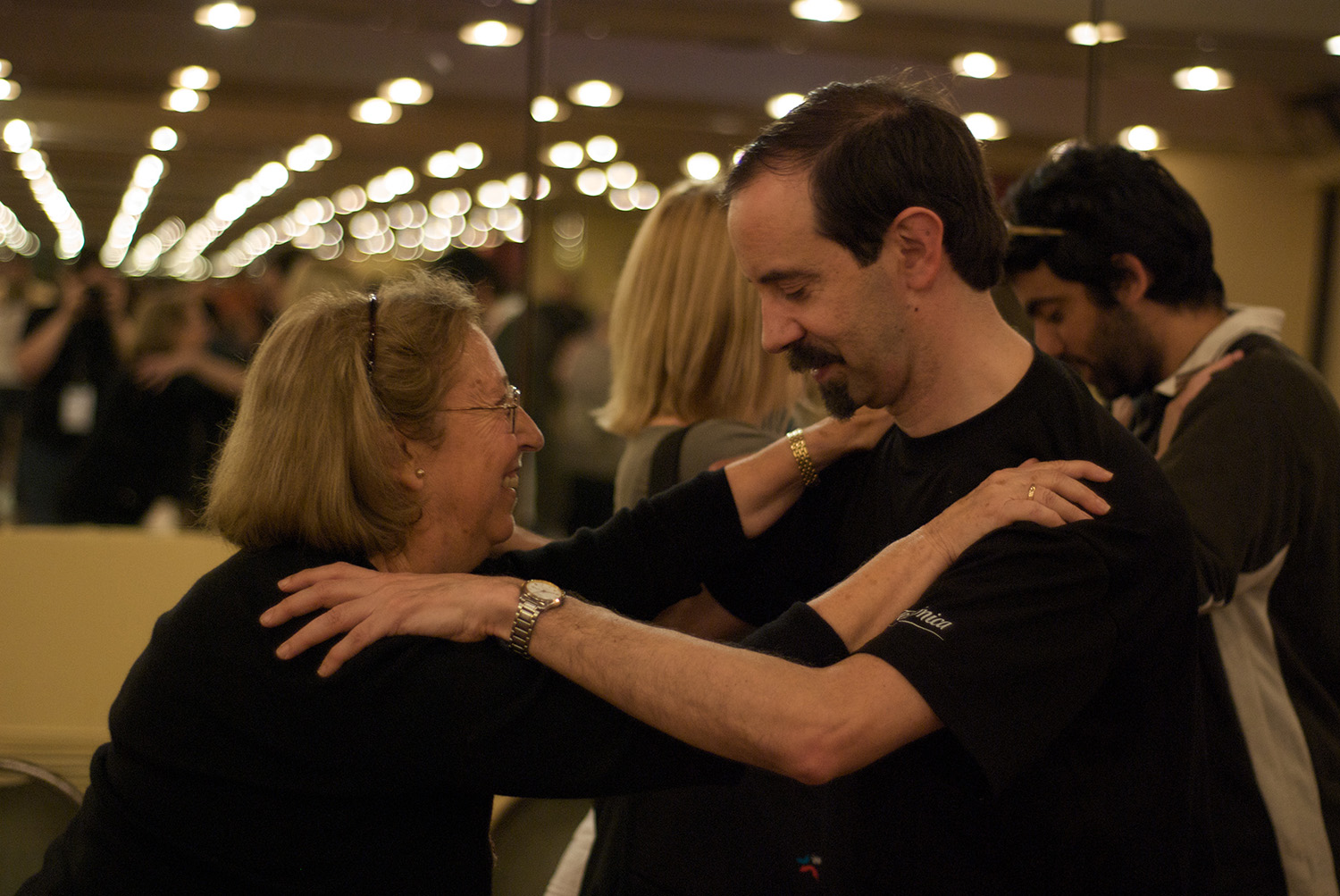
Step into tradition—where every move tells a story. Learn the art of tango one step at a time. Photo by Wikimania2009 Beatrice Murch, under the CC BY 2.0 <https://creativecommons.org/licenses/by/2.0> license, via Wikimedia Commons.
Tango Fashion and Shopping
Buenos Aires offers a unique shopping experience for lovers of the dance. From traditional tango shoes to stylish outfits, the city’s boutiques and markets provide a variety of fashion items that capture the essence of tango culture.
Tango Shoes: Specialized stores like Comme Il Faut and Tango Leike offer exquisite tango shoes, known for their comfort, elegance, and durability. These shoes are a must-have for dancers and a stylish souvenir for visitors.
Tango Clothing: For those looking to embody the tango spirit, shops like Mimi Pinzon offer tailored tango dresses and skirts. These garments are designed with both style and movement in mind, combining classic tango elegance with modern flair.
Tango-Inspired Accessories: You’ll find leather goods, handcrafted jewelry, and silk scarves inspired by tango motifs at local artisan markets like Feria de San Telmo and boutiques in Palermo.
Whether you’re a tango dancer or simply a fan of the style, Buenos Aires is the perfect place to explore and immerse yourself in the world of tango fashion.
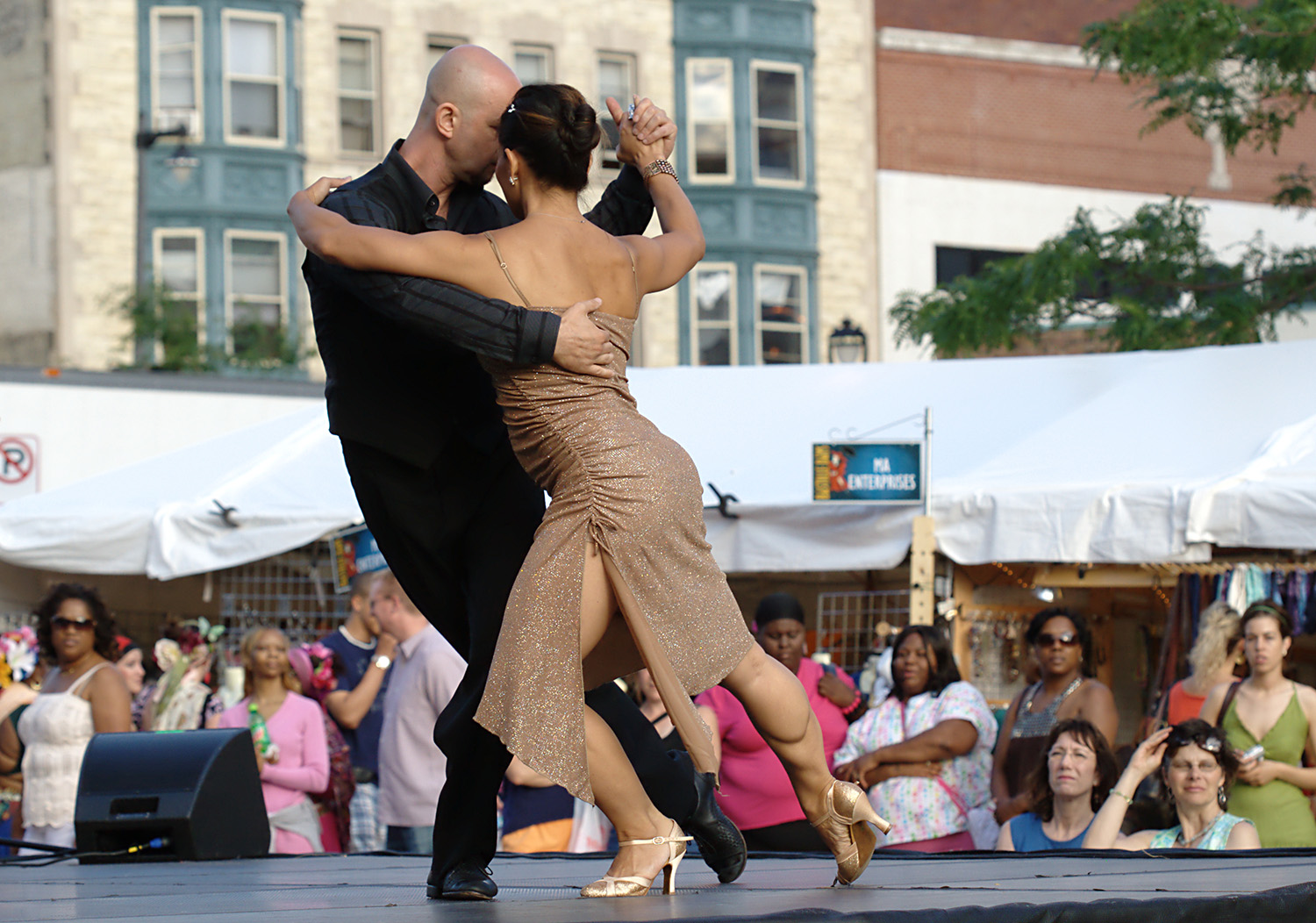
Elegance in every stitch—Tango’s timeless allure captured in the flowing fabrics of classic dance attire. Photo by Michael Pereckas from Milwaukee, WI, USA, under the CC BY 2.0 <https://creativecommons.org/licenses/by/2.0> license, via Wikimedia Commons.
Tango Etiquette and Local Tips
Tango etiquette is an important part of the tango culture in Buenos Aires, especially in traditional milongas (tango dance halls). By following these essential tango etiquette rules and local tips, you’ll show respect for the tango traditions in Buenos Aires while enjoying the unique social experience that comes with dancing in the city where tango was born.
1. The “Cabeceo”
What it is: The traditional way to ask someone to dance in Buenos Aires is through the cabeceo, a subtle nod of the head or eye contact from across the room.
Tip: Make eye contact and give a slight nod if you want to invite someone to dance. Avoid walking directly up to someone and asking them verbally, as this can be considered disrespectful.
2. Respect the Ronda (Dance Floor)
What it is: Dancers move counterclockwise around the floor in a circular flow known as the ronda.
Tip: Stay in your lane and avoid erratic movements that could disrupt others. Experienced dancers will often dance closer to the center, while beginners should stay toward the outer edge of the dance floor.
3. Dress Code
What it is: Milongas in Buenos Aires often expect dancers to dress elegantly, especially in the more traditional venues.
Tip: Men typically wear dress shirts and slacks, while women often wear dresses or skirts with tango shoes. Avoid casual clothing like jeans and sneakers unless you’re attending a more relaxed práctica (practice session).
4. Respecting the “Tanda”
What it is: Dances at a milonga are organized into sets of three to four songs called tandas, with a short break in between called the cortina (a non-tango song played to signal the end of the tanda).
Tip: It is customary to dance the entire tanda with the same partner. At the end of the tanda, thank your partner and escort them back to their seat.
5. Personal Space and Embrace
What it is: Tango embraces vary from close to open, depending on the style of dance and the comfort level of both partners.
Tip: Adapt your embrace based on the partner’s comfort, and always maintain a respectful connection. It’s important to be aware of personal boundaries, especially if you’re new to the tango scene.
6. Politeness and Courtesy
What it is: Buenos Aires milongas are social gatherings where respect and politeness are highly valued.
Tip: If you decline a dance invitation, do so politely. Likewise, if you’re turned down, don’t take it personally. Engage in friendly conversation but keep it light, as the focus is on dancing.
7. Observe Before Joining
What it is: If you’re new to a particular milonga, it’s helpful to observe how things work before jumping in.
Tip: Watch how locals behave, especially regarding floor etiquette, dress code, and the use of the cabeceo. Each milonga can have a slightly different atmosphere or style.
8. Local Milonga Tips
Timing: Most milongas start late, often around 10 PM or later, and can go into the early hours of the morning. Be prepared for a long night.
Tango vs. Prácticas: Milongas are social events with more formal dancing, while prácticas are informal practice sessions, where dancers can rehearse and improve. Attending both can be a great way to get more involved in the tango community.
9. Learning to Tango
Take a Class: Buenos Aires has many tango schools, and it’s a good idea to take a class if you’re new to the dance. Popular schools like Tango Brujo and La Viruta offer lessons at various levels.
Stay Humble: Tango is a lifelong learning experience, even for experienced dancers. Locals appreciate humility and effort, so focus on enjoying the process rather than trying to impress.
10. Local Tango Etiquette
Be Patient: Tango can be complex, so take your time learning the basics and refining your style. The local community values dedication and persistence.
Language Tip: Knowing a few basic Spanish phrases can help you navigate the tango scene and engage with locals. Phrases like “¿Bailas?” (Do you dance?) or “Gracias” (Thank you) go a long way.
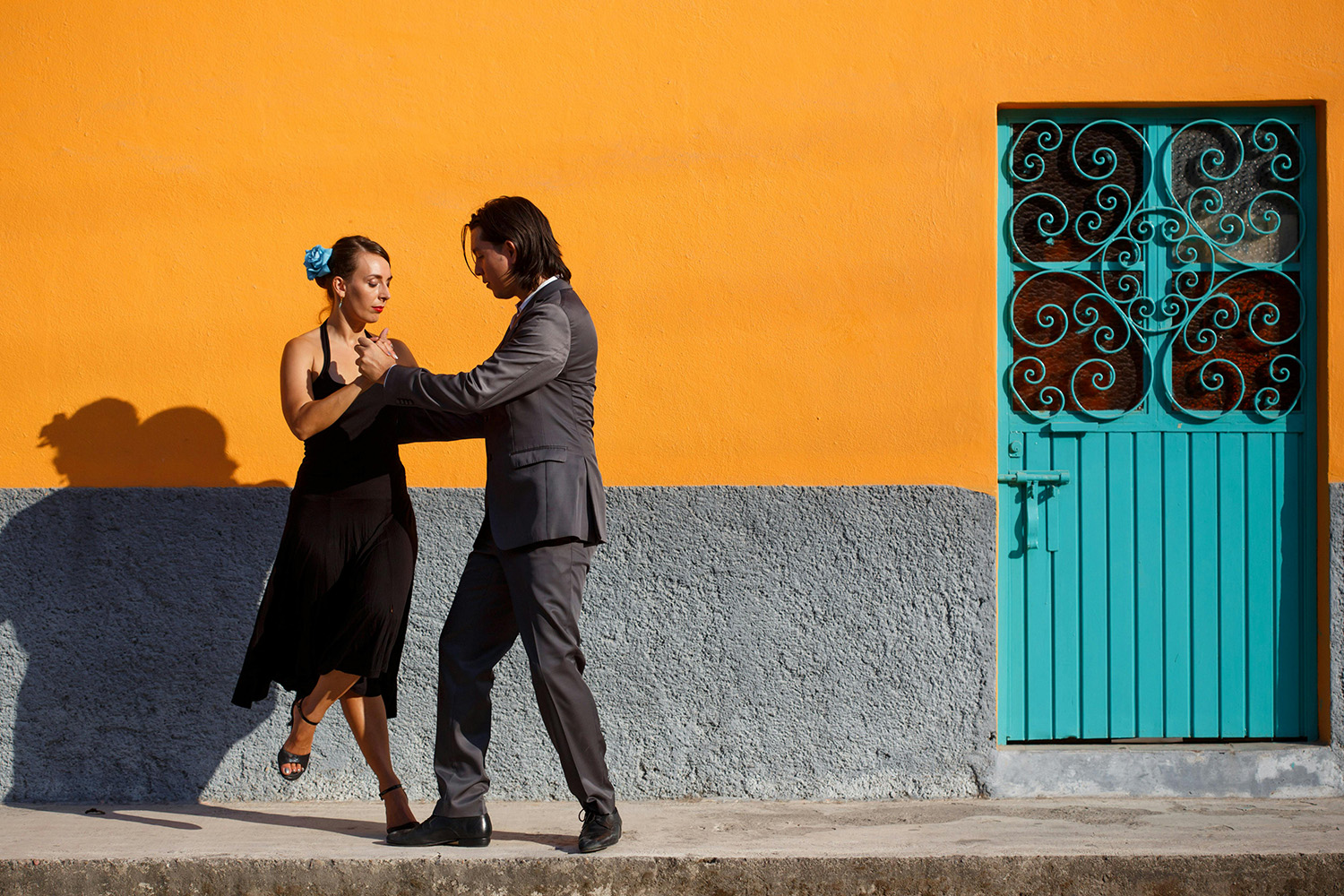
The elegance of every movement and the passion in every step. Photo by Los Muertos Crew on Pexels.
In Buenos Aires, tango is more than just a dance—it’s a way of life that pulses through the heart of the city. From the elegant milongas to the vibrant street performances, the rhythm of tango invites you to immerse yourself in its passionate embrace. Whether you’re a seasoned dancer or a curious observer, the city offers countless opportunities to experience the magic of this iconic dance. As you explore Buenos Aires, let the spirit of tango guide your steps, connecting you to the soul of Argentina with every beat of the music.

Latin America for Less is a group of travel experts who live, work, eat, and breathe all things South America. Their inspiration stems from a deep appreciation for the beauty and diversity that make this continent so special.

